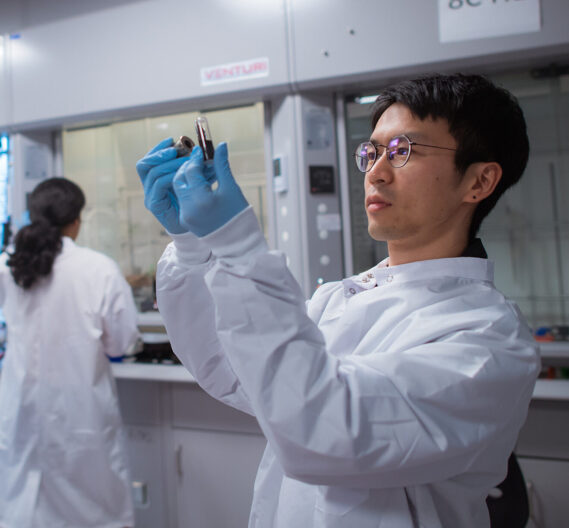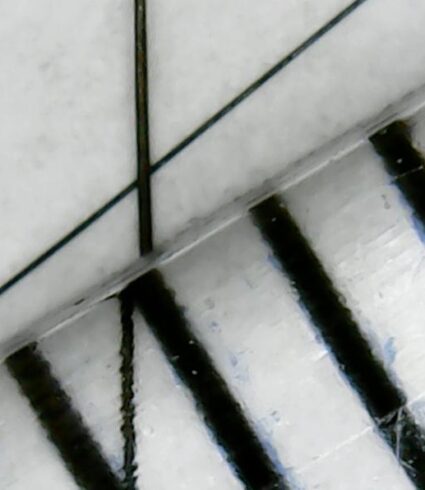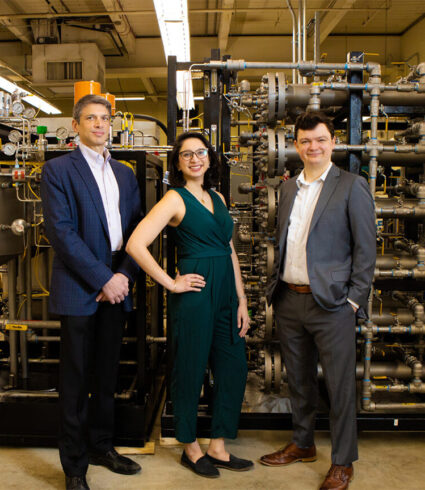Research and Impact
DMSE conducts pioneering research in areas such as nanotechnology, biomaterials, and energy materials. Its researchers' innovations have a profound impact on society by advancing sustainable energy technologies, improving health care through biomedical applications, and revolutionizing manufacturing processes.

-
Computing and Data Science
 DMSE researchers are designing next-generation hardware and semiconductor technology and leveraging computational and data-driven methods to accelerate materials discovery.
DMSE researchers are designing next-generation hardware and semiconductor technology and leveraging computational and data-driven methods to accelerate materials discovery. -
Energy and the Environment
 DMSE researchers are taking on climate change by building better batteries and fuel cells, developing analytical models for studying the environmental impact of materials, and using eco-friendly ways to make building materials such as cement.
DMSE researchers are taking on climate change by building better batteries and fuel cells, developing analytical models for studying the environmental impact of materials, and using eco-friendly ways to make building materials such as cement. -
Health and Medicine
 The inventiveness of DMSE research in health and medicine is limitless, from diagnostic devices that detect disease to to materials that can mimic the response of human tissue.
The inventiveness of DMSE research in health and medicine is limitless, from diagnostic devices that detect disease to to materials that can mimic the response of human tissue. -
Manufacturing
 Research at DMSE includes better manufacturing processes that use materials more efficiently and reduce waste, new product development, and improved processes for additive manufacturing.
Research at DMSE includes better manufacturing processes that use materials more efficiently and reduce waste, new product development, and improved processes for additive manufacturing. -
Transportation and Infrastructure
 Strong metal alloys for lighter and more durable auto components, electric batteries for planes, and construction materials from industrial waste are just a few of DMSE's transportation and infrastructure innovations.
Strong metal alloys for lighter and more durable auto components, electric batteries for planes, and construction materials from industrial waste are just a few of DMSE's transportation and infrastructure innovations.
Materials and Research Types
A safer environment, cleaner energy, and better computing devices depend on the materials with specific properties. DMSE researchers start with existing materials and apply a number of research methods and Activities. Click on the bars below to find out more.
Key Research Examples
3D printed structures for modeling the Young’s modulus of bamboo parenchyma
Devised an alternative approach to test the mechanical properties of the various tissues in bamboo. The new method involves enlarging the tissues’ microstructure into 3-D printed models so tests can be conducted more effectively.
To model bamboo, we needed to know if its spongy parenchyma tissue behaves like a honeycomb or a foam, as their properties depend on density in different ways. Since it’s difficult to cut out samples of parenchyma tissue, we 3-D printed larger-size replica structures of different densities and mechanically tested those instead.
Because bamboo is lightweight and sustainable, there’s growing interest in its use in construction. Understanding the mechanical properties of various kinds of bamboo is key in developing safe and reliable products.
Excited state non-adiabatic dynamics of large photoswitchable molecules using a chemically transferable machine learning potential
We developed a machine learning approach that accelerates the process of identifying photoswitches, molecules that activate, or “turn on,” when exposed to light.
Photoswitches could be used to develop light-activated drugs, including ones that treat diabetes, cancer, and nervous system disorders. But the current method of identifying functional photoswitches is difficult and costly.
The results pave the way for fast and accurate identification of photoswitchable molecules for light-activated drugs.
How hair deforms steel
Discovered why stainless-steel blades lose their sharpness over time. We found that a single strand of hair can cause the blade to chip. These degradations are more likely to happen if the blade’s microstructure is not uniform or if the blade cuts hair at an angle.
To find out why blades quickly get dull even when they interact with much softer material, like human hair.
Understanding the reasons for failure of materials provides us guidelines for improving them. In this case, making blades of more homogeneous microstructures will likely make them chip-resistant and last longer.

